Social media marketing is the practice of promoting products, services, or brands through various social media platforms. It involves creating and sharing content, engaging with users, and running targeted advertising campaigns to reach a specific audience.
With the increasing popularity and influence of social media, businesses have recognized its potential as a powerful marketing tool. Through social media marketing, companies can build brand awareness, enhance customer relationships, and drive website traffic. This form of marketing allows businesses to target and reach a large number of users efficiently and cost-effectively.
As social media platforms continue to evolve, it is essential for businesses to stay updated and utilize these platforms to their advantage.
Understanding The Impact Of Social Media Marketing
The evolution of social media marketing
Social media marketing has come a long way since its inception. Initially, social media platforms were used primarily for personal communication and connecting with friends and family. However, as the platforms gained popularity, businesses quickly recognized their potential for marketing. Social media marketing has evolved into a powerful strategy that allows businesses to reach their target audience, build brand awareness, and drive engagement. The ability to reach millions of users in real-time has transformed the marketing landscape. Today, social media marketing is an indispensable tool for businesses looking to thrive in the digital age.
The role of social media in brand development
The role of social media in brand development cannot be underestimated. With a wide range of social media platforms available, businesses have the opportunity to connect with their audience on a deeper level. By creating a strong brand presence on platforms like Facebook, Twitter, Instagram, and LinkedIn, businesses can foster brand loyalty and increase their customer base. Social media allows businesses to engage with their audience through interactive content, conversations, and promotions.
Additionally, social media provides businesses with valuable insights into their target market, which can be leveraged to tailor marketing strategies and offerings to meet customer needs. It’s essential for businesses to invest time and effort in cultivating a strong social media presence to stay competitive in today’s digital landscape.
Harnessing the power of social media platforms
Social media platforms have immense power when it comes to reaching and engaging with a target audience. Each platform offers unique features that can be harnessed to drive brand awareness and conversions. Facebook, with its massive user base, presents an opportunity for businesses to showcase content, run ads, and interact with customers through comments and messaging. Twitter, with its fast-paced nature, enables businesses to share quick updates, engage in real-time conversations, and leverage trending topics for increased visibility.
Instagram is perfect for visually-oriented businesses, allowing them to showcase products or services through aesthetically pleasing images and videos. LinkedIn is a valuable platform for businesses targeting professionals, offering the chance to network, share industry insights, and establish authority within a specific industry. By understanding the unique strengths of each social media platform, businesses can tailor their marketing efforts to maximize their impact and generate measurable results.
Optimizing Your Social Media Strategy
Your social media strategy is an essential component of your overall marketing plan. It allows you to connect with your target audience, build brand awareness, and ultimately drive more traffic and conversions. To ensure that your social media efforts are effective, it’s crucial to optimize your strategy. In this section, we will discuss three key areas to focus on: developing a compelling brand story, identifying your target audience and goals, and selecting the right social media platforms. Let’s dive in!
Developing a Compelling Brand Story
One of the first steps in optimizing your social media strategy is developing a compelling brand story. Your brand story is the narrative that defines who you are as a company, what you stand for, and how you provide value to your customers. It’s what sets you apart from your competitors and creates a memorable impression.
When developing your brand story, consider the following:
- What is your unique selling proposition (USP)?
- What are your core values and beliefs?
- What is the mission and vision of your company?
- What is your brand personality?
By answering these questions, you can craft a brand story that resonates with your target audience and helps you stand out in a crowded social media landscape.
Identifying Your Target Audience and Goals
Understanding your target audience is crucial for a successful social media strategy. When you know who your ideal customer is, you can tailor your content, messaging, and targeting to meet their specific needs and preferences. Conduct market research, analyze demographics, and gather insights about your audience’s interests and behaviors.
Additionally, define your social media goals. What do you want to achieve through your social media efforts? Is it brand awareness, lead generation, customer engagement, or something else? Setting clear goals helps you stay focused and measure your success.
Selecting the Right Social Media Platforms
Not all social media platforms are created equal, and it’s important to choose the ones that align with your audience and goals. Conduct research to identify which platforms your target audience is most active on. Consider factors such as age, location, and interests.
For example, if your target audience is predominantly young professionals, platforms like LinkedIn or Twitter might be more effective. However, if you’re targeting a younger demographic, platforms like Instagram or TikTok could be a better fit.
It’s also important to consider the type of content you plan to create. If you’re focusing on visual content, platforms like Instagram or Pinterest might be ideal. If you prefer short and snappy updates, Twitter could be the platform for you.
By selecting the right social media platforms, you can maximize your reach and engagement, ensuring that your efforts are impactful and yield results.
Optimizing your social media strategy is a continuous process. As you implement and measure your efforts, be open to experimentation and adaptation. Stay on top of social media trends, engage with your audience, and refine your strategy based on what works best for your business. By doing so, you’ll be well on your way to social media success!
Creating Engaging Content For Social Media
Creating Engaging Content for Social Media In today’s digital landscape, social media has become an essential tool for businesses to connect with their audience and build brand awareness. However, with the increasing competition and ever-changing algorithms, it can be a challenge to create content that truly engages users. To make your social media efforts fruitful, it is crucial to focus on crafting captivating headlines and captions, utilizing visual content effectively, and incorporating storytelling techniques. Below we will discuss each of these elements in detail.
Crafting Captivating Headlines and Captions The first step to capturing your audience’s attention is through captivating headlines and captions. These elements serve as a virtual gateway, enticing users to click, read, and engage with your content further. To craft compelling headlines, consider the following tips: 1. Keep it concise and compelling: Aim for headlines that are short, snappy, and convey the value of reading the content. 2. Use keywords wisely: Incorporate relevant keywords that appeal to your target audience and align with your content strategy. 3. Create a sense of urgency:
Use words that create a sense of FOMO (fear of missing out) or time-sensitivity to encourage immediate action. 4. Spark curiosity: Employ the power of intrigue by posing a thought-provoking question or offering a solution to a common problem. 5. Test and refine: Don’t be afraid to experiment with different headline variations and analyze their performance to optimize your content strategy. When it comes to captions, the same principles apply.
Aim for concise, attention-grabbing text that complements your visuals and adds value to the user experience. Utilizing Visual Content Effectively Visual content is an incredibly effective way to capture and retain your audience’s attention. Whether it’s images, videos, infographics, or GIFs, visual elements can significantly enhance the overall impact of your social media posts. Consider the following strategies to effectively leverage visual content: – Incorporate high-quality images: Use visually appealing images that align with your brand and evoke emotions.
– Infuse videos into your strategy: Create engaging videos that tell a story, showcase your products, or provide valuable insights. – Experiment with formats: From carousels to live videos to Stories, try out different formats to keep your content fresh and diverse. – Optimize for mobile: Ensure your visuals are optimized for mobile viewing, as most social media users access platforms through their smartphones. – **Include alt text:** Add alternative text descriptions to your images to improve accessibility and enhance search engine optimization.
Incorporating Storytelling Techniques A compelling story has the power to captivate audiences and create a lasting impact. Leveraging storytelling techniques within your social media content can foster deeper connections and engagement with your audience. Consider the following storytelling elements: 1. Define your brand narrative: Create a consistent brand story that resonates with your target audience and aligns with your overall marketing goals. 2. **Establish a relatable protagonist:** Connect with your audience by presenting relatable characters that face similar challenges and experiences.
3. **Use emotions to engage:** Tap into your audience’s emotions by sharing stories that evoke joy, empathy, or nostalgia. 4. **Keep it authentic:** Be genuine and transparent in your storytelling to build trust and credibility with your audience. 5. **Include a clear call to action:** Encourage your audience to take action, whether it’s visiting your website, making a purchase, or sharing your content. By incorporating these storytelling techniques, your social media content will become more memorable and impactful. Conclusion Creating engaging content for social media is a continual learning process.
By focusing on crafting captivating headlines and captions, utilizing visual content effectively, and incorporating storytelling techniques, you can establish a strong brand presence on social media platforms. Remember to stay consistent, experiment with different approaches, and analyze the performance of your content to continually optimize your strategy. With dedication and creativity, you can foster meaningful connections and drive notable results through your social media efforts.
Implementing Effective Social Media Advertising
When it comes to social media marketing, implementing effective social media advertising is key to driving results for your business. Social media platforms like Facebook, Instagram, and Twitter offer a wide range of advertising options to help you reach your target audience and achieve your marketing goals. In this article, we will explore how to choose the right ad formats, strategies for targeting your audience, and ways to measure the success of your ads.
Choosing the right ad formats for your goals
One of the first steps in implementing effective social media advertising is selecting the right ad formats that align with your marketing goals. Each social media platform offers different formats, such as image ads, video ads, carousel ads, and stories ads. Understanding your target audience and your campaign objectives will help you determine which format will resonate best with your audience and deliver the desired results.
For example, if your goal is to increase brand awareness, using eye-catching image ads or engaging video ads can help attract attention and generate interest among your target audience. On the other hand, if you want to showcase multiple products or features, carousel ads allow you to display a series of images or videos that users can swipe through, providing an interactive and informative experience.
Targeting strategies to reach your audience
Another crucial aspect of implementing effective social media advertising is employing the right targeting strategies to reach your desired audience. Social media platforms provide extensive targeting options, allowing you to narrow down your audience based on demographics, interests, behaviors, and even specific locations.
Here are some effective targeting strategies to consider:
- Demographic targeting: Focus on specific demographics such as age, gender, income, or education level to ensure your ads are seen by the right people.
- Interest targeting: Target individuals who have expressed interest in topics related to your products or services. This helps you reach a more engaged audience who is likely to be interested in what you have to offer.
- Behavior targeting: Tailor your ads based on user behavior, such as online purchase history, device usage, or engagement with certain types of content.
- Location targeting: Geo-target your audience by selecting specific locations where you want your ads to be shown. This is particularly useful for local businesses or campaigns focused on specific regions.
Measuring the success of your ads
Measuring the success of your social media ads is essential to ensure you are achieving your desired outcomes and optimizing your advertising efforts. It’s important to track relevant metrics and analyze the data to gain valuable insights that will inform your future advertising strategies.
Here are some key metrics to consider when measuring the success of your ads:
- Impressions: The number of times your ad was displayed to users.
- Click-through rate (CTR): The percentage of users who clicked on your ad after seeing it.
- Conversion rate: The percentage of users who completed a desired action, such as making a purchase or filling out a form.
- Cost per acquisition (CPA): The average cost of acquiring a customer through your ad campaigns.
- Return on ad spend (ROAS): The revenue generated for every dollar spent on advertising.
By regularly monitoring these metrics and adjusting your strategies accordingly, you can ensure that your social media ads are driving meaningful results and maximizing your return on investment.
In conclusion, implementing effective social media advertising requires careful consideration of ad formats, targeting strategies, and measurement techniques. By choosing the right ad formats, targeting your audience effectively, and measuring the success of your ads, you can create impactful social media campaigns that reach your marketing goals and drive business growth.
Building And Engaging Your Social Media Community
Your social media community is the backbone of your online presence. It consists of your followers, fans, and customers who engage with your content on various social media platforms. Building and engaging this community is essential for the success of your social media marketing efforts. Here are some strategies to help you grow, encourage user-generated content and engagement, and respond to comments and feedback.
Growing your followers organically
Growing your social media following organically is crucial for building a strong community. While it may be tempting to buy followers or use automated tools, these tactics can harm your reputation and engagement rates in the long run. Instead, focus on these organic growth strategies: Engage with your audience by responding to comments and messages and creating meaningful interactions. Post high-quality and relevant content that resonates with your target audience to attract genuine followers. Utilize hashtags and collaborate with other influencers in your niche to increase visibility and reach. These effective strategies for social media growth may take longer to see results, but they will ultimately lead to a more engaged and loyal following.
- Create high-quality and valuable content that resonates with your target audience.
- Optimize your social media profiles with relevant keywords and hashtags to improve visibility.
- Collaborate with influencers and industry experts to reach a wider audience.
- Promote your social media presence across your other marketing channels, such as website, blog, and email newsletters.
Encouraging user-generated content and engagement
User-generated content is a powerful way to engage your social media community and increase brand authenticity. Here are some tactics to encourage your followers to create and share content:
- Run contests and giveaways where participants are required to create and share content related to your brand.
- Ask questions, conduct polls, or create interactive quizzes to encourage engagement and gather valuable insights.
- Share user-generated content on your social media profiles, giving credit to the creators.
- Respond to user-generated content with comments, likes, or shares to show appreciation and foster a sense of community.
Responding to comments and feedback
Engaging with your community means actively responding to comments and feedback. This shows that you value their opinions and care about their experience. Here are some best practices for responding to comments and feedback:
- Monitor your social media platforms regularly to ensure timely responses to comments and feedback.
- Reply promptly and professionally, addressing any concerns or questions raised by your community.
- Show appreciation for positive feedback and address any negative feedback with empathy and a willingness to resolve any issues.
- Be transparent and honest in your responses, providing updates and solutions when necessary.
Building and engaging your social media community takes time and effort, but it’s worth the investment. By growing your followers organically, encouraging user-generated content and engagement, and responding to comments and feedback, you can create a thriving community that supports your brand and drives results.
Analyzing Social Media Data For Insights
Analyzing Social Media Data for Insights
As a social media marketer, you understand the importance of analyzing data to gain valuable insights into your audience, content performance, and overall strategy. By utilizing social media analytics tools, measuring and tracking key metrics, and using data to refine your strategy, you can ensure that your social media efforts are effective and optimized for success.
Utilizing social media analytics tools
When it comes to analyzing social media data, it’s crucial to have the right tools in your arsenal. Fortunately, there are numerous social media analytics tools available that can provide you with comprehensive data on various platforms. Some popular tools include:
- Google Analytics
- Facebook Insights
- Twitter Analytics
- Instagram Insights
- LinkedIn Analytics
These tools offer valuable information such as audience demographics, engagement rates, and content performance metrics. By harnessing the power of these tools, you can gain insights into your audience’s preferences, interests, and behaviors, allowing you to tailor your content and strategies accordingly.
Measuring and tracking key metrics
Measuring and tracking key metrics is essential for evaluating your social media efforts and determining their impact on your business goals. Here are some key metrics you should consider:
| Metric | Description |
|---|---|
| Reach | The number of unique users who saw your content. |
| Engagement rate | The percentage of users who interacted with your content (likes, comments, shares, etc.). |
| Click-through rate (CTR) | The percentage of users who clicked on a link in your social media posts. |
| Conversion rate | The percentage of users who completed a desired action (such as making a purchase or signing up for a newsletter). |
By regularly monitoring these metrics, you can identify trends, understand what resonates with your audience, and optimize your social media strategy accordingly.
Using data to refine your strategy
Data-driven decision making is a powerful tool for refining your social media strategy. By analyzing the data you collect, you can make informed decisions that lead to better results. Here’s how you can use data to refine your strategy:
- Identify top-performing content: Analyze which types of content generate the highest engagement and reach, and focus on creating more of similar content.
- Optimize posting times: Use data to determine the times when your audience is most active and schedule your posts accordingly to maximize visibility and engagement.
- Test and iterate: Experiment with different content formats, messaging styles, and visuals, and track the performance of each to identify what works best.
- Monitor competitor data: Keep an eye on your competitors’ social media activities and use the insights gained to differentiate your strategy and stay ahead.
By using data to guide your decision-making process, you can continuously refine your social media strategy and achieve better results over time.
Leveraging Influencer Marketing
Social media marketing has become an essential component of any successful digital marketing strategy. It allows businesses to connect with their target audience, build brand awareness, and drive conversions. One effective strategy within social media marketing is leveraging influencer marketing. By collaborating with influencers who have a significant following in your industry, you can tap into their reach and credibility to promote your products or services. In this article, we will explore how to identify relevant influencers, approach them for collaborations, and measure the impact of these partnerships.
Identifying relevant influencers in your industry
When it comes to finding influencers in your industry, it’s crucial to ensure they align with your brand values and target audience. Here are a few steps to help you identify the most relevant influencers:
- Research social media platforms: Start by identifying the platforms where your target audience is most active. This could be Instagram, YouTube, TikTok, or even niche-specific forums and blogs.
- Search relevant hashtags: Use popular hashtags related to your industry and see who the top posts are coming from. These individuals are likely to be influencers in that space.
- Engagement and authenticity: Look for influencers who have high engagement rates and actively interact with their followers. Authenticity is key, so prioritize influencers who genuinely connect with their audience.
- Budget considerations: Finally, consider your budget and the costs associated with collaborating with influencers. Some may require monetary compensation, while others may be open to partnerships in the form of free products or services.
Approaching and collaborating with influencers
Once you have identified the influencers who are a good fit for your brand, it’s time to approach and collaborate with them. Here are a few tips to ensure a successful partnership:
- Personalized outreach: When reaching out to influencers, make sure to personalize your message and explain why you think they would be a great fit for your brand. Highlight how the collaboration can benefit both parties.
- Provide clear guidelines: Clearly communicate your expectations, deliverables, and any guidelines for promoting your brand. This includes preferred messaging, hashtags, and content formats.
- Build a relationship: Building a rapport with influencers is essential for long-term partnerships. Engage with their content, comment on their posts, and maintain open lines of communication to foster trust and collaboration.
- Track and analyze performance: Implement tracking codes or unique URLs to measure the impact of influencer partnerships. Monitor key metrics such as website traffic, conversions, and social media engagement to evaluate the success of each collaboration.
Measuring the impact of influencer partnerships
Measuring the impact of influencer partnerships is crucial to determine the return on investment and optimize future collaborations. Here are some methods to measure the impact:
| Metric | Explanation |
|---|---|
| Social media engagement | Monitor likes, comments, and shares on influencer posts to gauge audience engagement. |
| Website traffic | Track the number of visitors coming to your website through influencer referral links or tracking codes. |
| Conversions | Analyze the number of conversions or sales attributable to influencer partnerships. |
| Brand mentions | Track mentions of your brand on social media platforms to assess brand visibility and reach. |
It’s important to regularly evaluate the impact of influencer partnerships and make data-driven decisions to optimize future collaborations. By identifying relevant influencers, fostering effective collaborations, and measuring performance, you can leverage influencer marketing to enhance your social media strategy and drive business growth.
Staying Up-To-Date With Social Media Trends
In the fast-paced world of social media marketing, staying up-to-date with the latest trends is crucial for success. As platforms evolve and user preferences change, it’s important for marketers to continuously embrace new platform features and updates, engage in continuous learning, and adapt to changes in the landscape. By doing so, businesses can stay ahead of the competition and effectively reach their target audience.
Embracing New Platform Features and Updates
One of the keys to staying up-to-date with social media trends is to actively embrace new platform features and updates. Social media platforms like Facebook, Instagram, Twitter, and LinkedIn are constantly rolling out new features to enhance user experience and provide marketers with new opportunities to engage with their audience.
As a social media marketer, it’s crucial to keep a close eye on these updates and quickly adapt your strategy to take advantage of them. Whether it’s a new Stories feature, live streaming capabilities, or new ad formats, being an early adopter can give your business a competitive edge.
Regularly checking the official blogs and news sections of these platforms can help you stay informed about the latest features and updates. Moreover, being an active participant in industry forums and following reputable social media marketing blogs can also provide valuable insights into new trends and platform changes.
Continuous Learning and Adapting to Changes
The world of social media marketing is constantly evolving. What worked yesterday might not work today, which is why continuous learning and adaptability are essential skills for marketers. By proactively seeking knowledge and staying informed about industry trends, you can position yourself as an expert in your field and ensure your strategies remain relevant.
Reading books, attending webinars, participating in conferences, and joining online courses are just a few ways you can continue learning and stay up-to-date. Surrounding yourself with like-minded professionals and joining industry-specific communities can also provide you with valuable insights and perspectives.
It’s important to be open to changes and experiment with new strategies. By constantly analyzing your social media performance, you can identify what works and what doesn’t. This data-driven approach allows you to make informed decisions and adapt your strategies accordingly.
Predicting Future Trends in Social Media Marketing
While it’s impossible to predict the future with certainty, having a keen eye for trends can help you stay ahead of the curve. By closely studying audience behavior, technological advancements, and cultural shifts, you can make educated guesses about the direction social media marketing is heading.
Stay updated with market research reports, industry newsletters, and thought leadership articles to gain insights into emerging trends. Observe how your target audience engages with social media and analyze the strategies of successful competitors to identify patterns that can indicate future trends.
By continuously monitoring and researching the latest developments in social media marketing, you can position your business to seize new opportunities, gain a competitive advantage, and effectively reach your audience in the ever-changing digital landscape.
Case Studies: Successful Social Media Marketing Campaigns
Examining real-life examples of effective strategies
Every successful social media marketing campaign leaves clues for us to dissect and learn from. By examining these real-life examples, we can gain valuable insights into the strategies that propelled these campaigns to success.
One such notable example is the #ShareACoke campaign by Coca-Cola. This campaign took the simple concept of personalization and leveraged it to create a massive social media buzz. Coca-Cola replaced its logo on their bottles with popular names, encouraging people to share their personalized bottles online using the hashtag #ShareACoke.
Another fascinating case study is GoPro. They have mastered the art of user-generated content by leveraging their passionate community of GoPro users. Their social media channels are filled with stunning, adrenaline-pumping videos and photos that have been captured using their cameras. By showcasing the exhilarating adventures of their customers, GoPro has created a strong emotional connection with their audience and turned them into brand advocates.
Analyzing the key elements that contributed to their success
While each successful social media marketing campaign may have its unique elements, there are some common factors that contribute to their success. By analyzing these key elements, we can gain insights for our own marketing efforts.
- Personalization: The #ShareACoke campaign capitalized on people’s desire for personalized experiences. This highlights the importance of understanding your target audience and tailoring your messaging to resonate with them personally.
- User-generated content: GoPro’s success stems from their ability to empower and showcase their passionate community of users. They understand the power of user-generated content in building authenticity and trust.
- Emotional connection: Both campaigns focused on evoking emotion in their audience. Coca-Cola tapped into people’s desire for connection and nostalgia, while GoPro inspires adventure and adrenaline. Building an emotional connection can help forge a lasting bond with your audience.
- Hashtag campaigns: Both campaigns effectively utilized hashtags to encourage participation and create a sense of community. Hashtags can amplify the reach and engagement of your campaign, making it easier for people to find and contribute to the conversation.
Drawing inspiration for your own brand’s marketing efforts
Examining successful social media marketing campaigns can provide inspiration and ideas for your own brand’s marketing efforts. While it’s important to tailor your strategy to fit your brand and audience, there are valuable lessons to be learned from these case studies.
Consider how you can leverage personalization to make your audience feel special and connected. Encourage user-generated content to foster a community around your brand. Focus on forging an emotional connection by tapping into the desires and values of your audience. And don’t forget the power of hashtags to amplify your campaign’s impact.
By drawing inspiration from these case studies, you can create a successful social media marketing campaign that resonates with your audience and achieves your brand objectives.
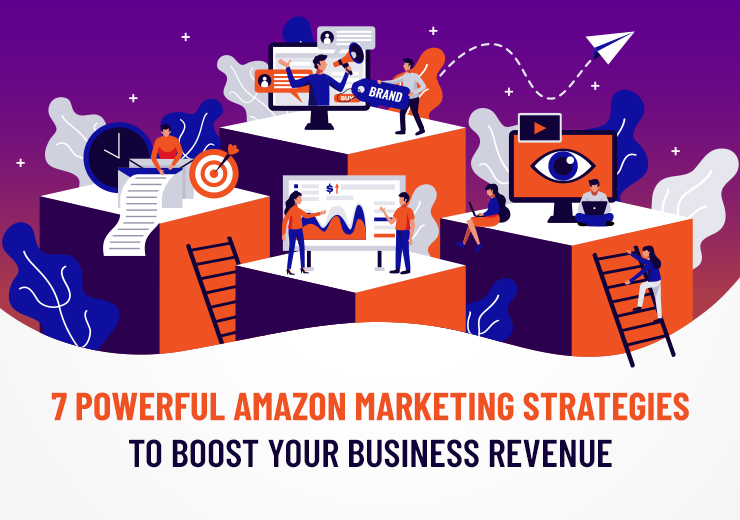
Frequently Asked Questions For Social Media Marketing
What Is Social Media Marketing?
Social media marketing is the use of social platforms to promote products and services, engage with the audience, and build brand awareness.
Why Is Social Media Marketing Important?
Social media marketing helps businesses reach a wider audience, increase brand visibility, improve customer engagement, and drive website traffic and conversions.
How Does Social Media Marketing Work?
Social media marketing involves creating and sharing content on social platforms, interacting with the audience, running ads, and analyzing metrics to optimize campaigns.
What Are The Benefits Of Social Media Marketing?
Social media marketing offers benefits such as increased brand recognition, improved customer loyalty, higher conversion rates, and better customer insights.
Which Social Media Platforms Should I Use For Marketing?
The choice of social media platforms for marketing depends on your target audience. Facebook, Instagram, Twitter, LinkedIn, and YouTube are popular options.
How Can I Measure The Success Of My Social Media Marketing Efforts?
Success in social media marketing can be measured through metrics like engagement rate, reach, click-through rate, conversion rate, and return on investment (ROI).
Is Social Media Advertising Effective In Driving Sales?
Yes, social media advertising can be highly effective in driving sales as it allows you to target specific audiences, retarget website visitors, and showcase products/services.
How Often Should I Post On Social Media For Marketing?
The frequency of social media posts depends on the platform and the preferences of your target audience. Consistency is key, but quality content should be prioritized over quantity.
Should I Outsource My Social Media Marketing?
Outsourcing social media marketing can be beneficial if you lack expertise or time. However, it’s important to find a reliable agency or professional to ensure quality results.
How Can I Engage With My Social Media Followers Effectively?
Engage with your social media followers by responding to comments, asking questions, running contests or giveaways, and sharing user-generated content to foster a sense of community.
Conclusion
Social media marketing has become a vital tool for businesses to connect and engage with their target audience in today’s digital age. By leveraging platforms such as Facebook, Instagram, Twitter and LinkedIn, companies can build brand awareness, drive website traffic, and increase sales.
With strategic planning and consistent execution, social media marketing can yield significant results and propel businesses to new heights of success. Stay connected, adapt to trends, and make the most of this powerful marketing channel.


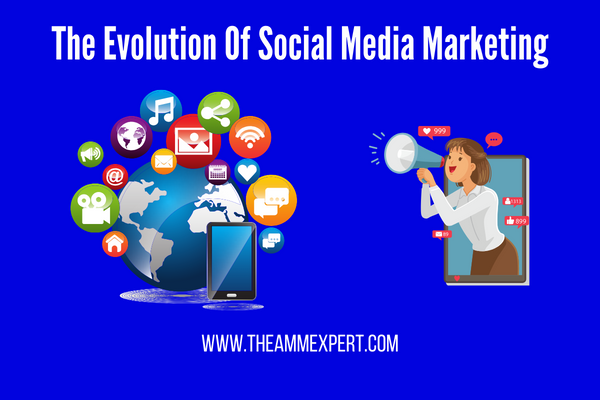
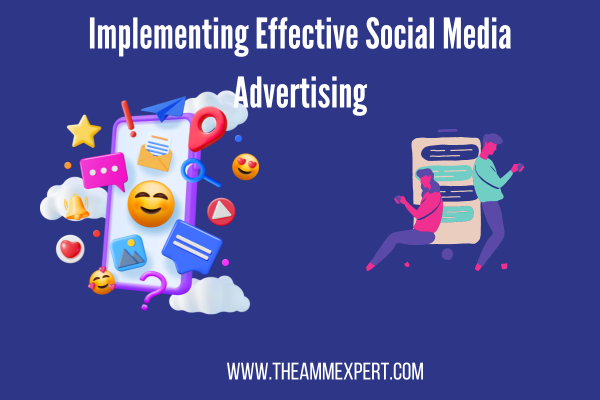
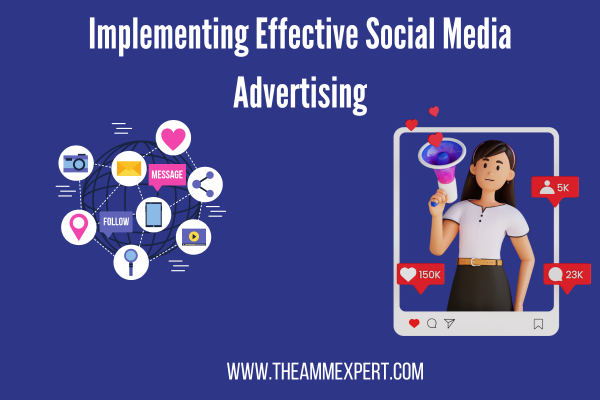
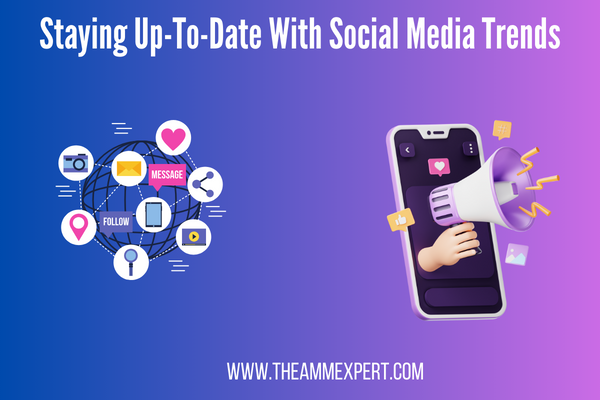




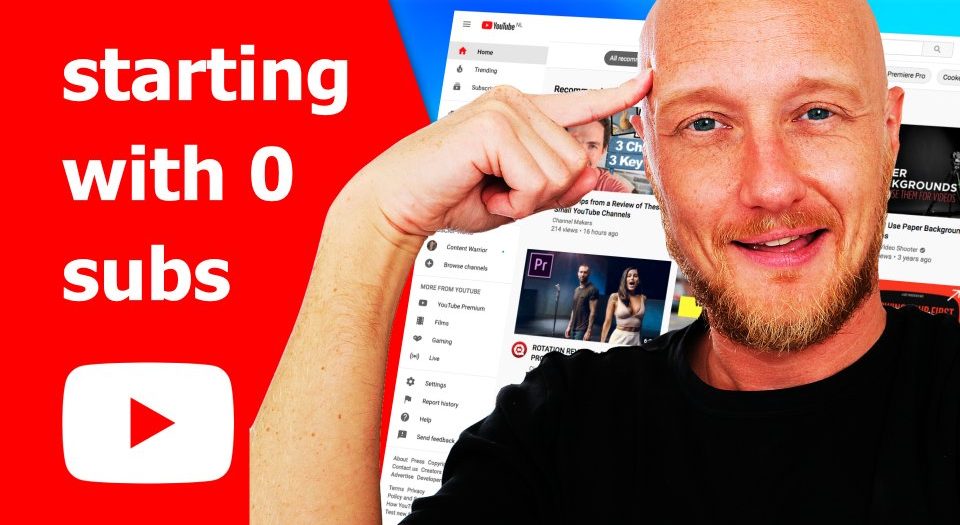
Write a comment
Your email address will not be published. All fields are required